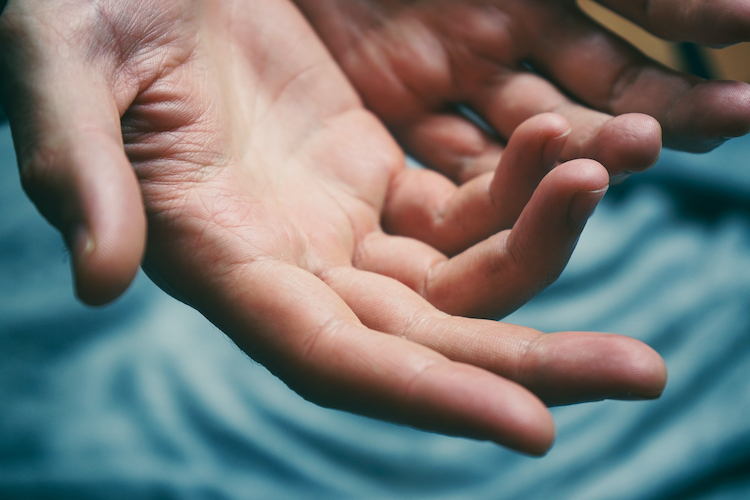Like it or not, technology has become an integral part of our daily lives in 2020. The constant use of smartphones, tablets, laptops, and other devices has been associated with an increase in certain types of musculoskeletal injuries. These conditions often present with pain and are categorized as repetitive use, overuse, nerve compression, or strain injuries. Common symptoms of technology related conditions include joint pain, swelling, stiffness, numbness, pins and needles, or burning sensations.
Often the result of poor ergonomics, hand or arm positioning, and repeated motions, this combination of factors can lead to conditions referred to as texting thumb/ Blackberry thumb/ Nintendo thumb, “selfie-elbow,” and more. Let’s break down some of the more common entities.
Texting Thumb
 This is a blanket term used to reference any type of thumb pain associated with device use. Most commonly, this term is referring to trigger thumb, thumb arthritis, or wrist tendonitis known as DeQuervain’s tenosynovitis.
This is a blanket term used to reference any type of thumb pain associated with device use. Most commonly, this term is referring to trigger thumb, thumb arthritis, or wrist tendonitis known as DeQuervain’s tenosynovitis.
Trigger thumb is a mechanical condition caused by a thickening of the leading edge of the tendon sheath from repetitive mechanical irritation. This can be caused or exacerbated by constant touch typing, texting, or swiping on a smartphone or tablet. Reactive thickening of the tendon and tendon sheath cause a spectrum of symptoms that range from pain, to clicking, and locking of the thumb in a bent position in the most severe form. The pain can be intense and will often radiate up and down the forearm.
Fortunately, most cases of trigger thumb are either self-limiting or respond to non-surgical treatments such as cortisone injections and splinting at night. A minority of patients may require surgery if the symptoms are severe and persist after two or three injections. Therapy is rarely needed except after surgery.
Thumb Arthritis
Above the age of 50, nearly half of the population develops some degree of arthritis at the base of the thumb. Some people are more susceptible to arthritis due to the shape of the joint surface or underlying ligament laxity. Constant forceful pinching, especially the forces needed to hold heavier devices, can contribute to, or exacerbate thumb arthritis. Treatment of thumb arthritis is entirely based on the severity of symptoms and typically involves improving ergonomics and activity modification early on. Splinting and NSAIDs can help as well. If symptoms worsen, steroid injections into the joint guided by ultrasound or fluoroscopy can offer significant relief. Surgery is extremely successful when reserved for those patients with severe symptoms that get in the way of daily life and fail to respond to less invasive measures.
Selfie-elbow (Cubital Tunnel Syndrome)
Cubital tunnel syndrome is the second most common nerve compression syndrome of the upper extremity next to carpal tunnel. The ulnar nerve can become compressed as it crosses in the bony groove behind the inner elbow resulting in discomfort, numbness, shooting pain, and pins and needle sensations that can radiate up the forearm to the ring and small fingertips. This is opposite the carpal tunnel, which affects the thumb side of the hand exclusively. Long-standing cubital tunnel can lead to weakness and muscle wasting of the hand with loss of strength and fine motor coordination. Here problematic positions occur often in routine activities such as talking on a smartphone, typing, texting, driving, taking selfies, and sleeping.
Initial treatment for cubital tunnel (selfie-elbow) is always activity modification that avoids elbow flexion or pressure on the medial elbow for any length of time. This can involve changing positions while typing or driving, using Bluetooth headsets to speak on the phone, dictation software, and bracing that avoids elbow flexion while sleeping. Simple solutions can be a common knee pad worn backwards, taping a towel around the elbow, or purchasing commercially available cubital tunnels braces. The symptoms of numbness and discomfort are typically intermittent in the early stages. If patients experience constant symptoms or weakness despite activity modification, this may require surgery to release and decompress the ulnar nerve across the elbow.
Prevention
 The best way to manage tech-related conditions is prevention. This involves paying attention to the amount of time you are using devices and the position of your body while using them. In addition to limiting tech time, other tips for prevention include typing with a different finger or using the voice text feature, making a phone call rather than texting, using a selfie stick, and avoiding sloppy posture by keeping the wrists straight, elbows extended and relaxed, and letting the fingers hover over the keyboard. In addition, simple stretching can loosen up tight muscles and relieve some stiffness and discomfort. If these simple measures aren’t helping, or if your symptoms are becoming worse over time, always see a hand surgeon to discuss your treatment options. Contact us with any questions about technology-related hand conditions.
The best way to manage tech-related conditions is prevention. This involves paying attention to the amount of time you are using devices and the position of your body while using them. In addition to limiting tech time, other tips for prevention include typing with a different finger or using the voice text feature, making a phone call rather than texting, using a selfie stick, and avoiding sloppy posture by keeping the wrists straight, elbows extended and relaxed, and letting the fingers hover over the keyboard. In addition, simple stretching can loosen up tight muscles and relieve some stiffness and discomfort. If these simple measures aren’t helping, or if your symptoms are becoming worse over time, always see a hand surgeon to discuss your treatment options. Contact us with any questions about technology-related hand conditions.


